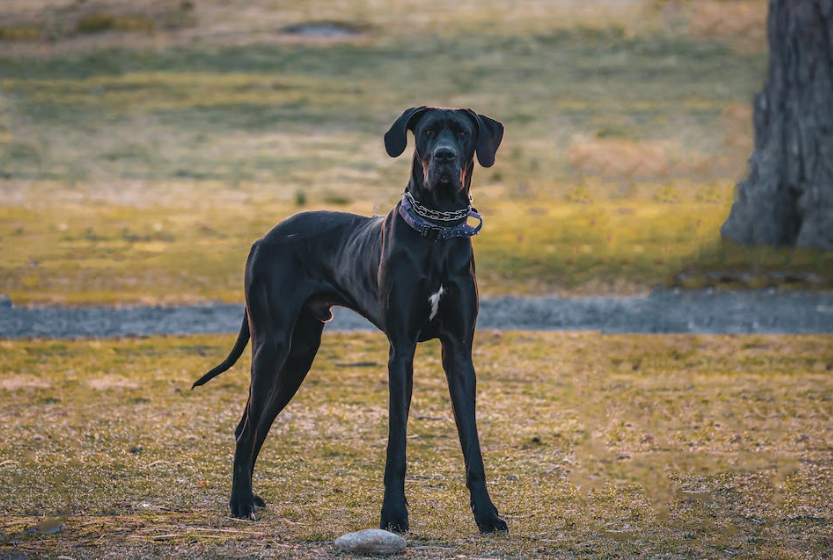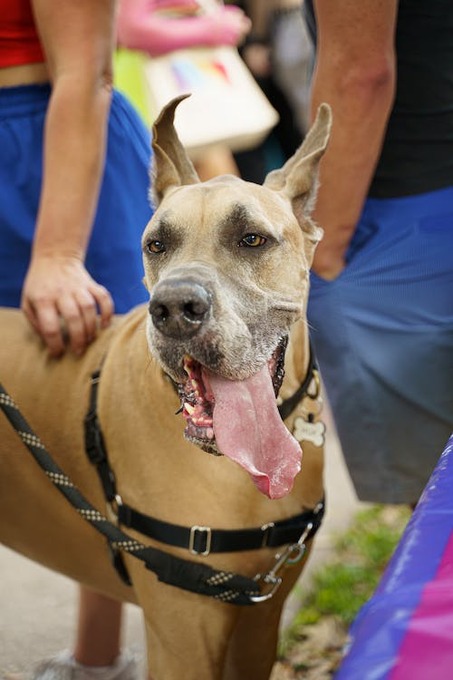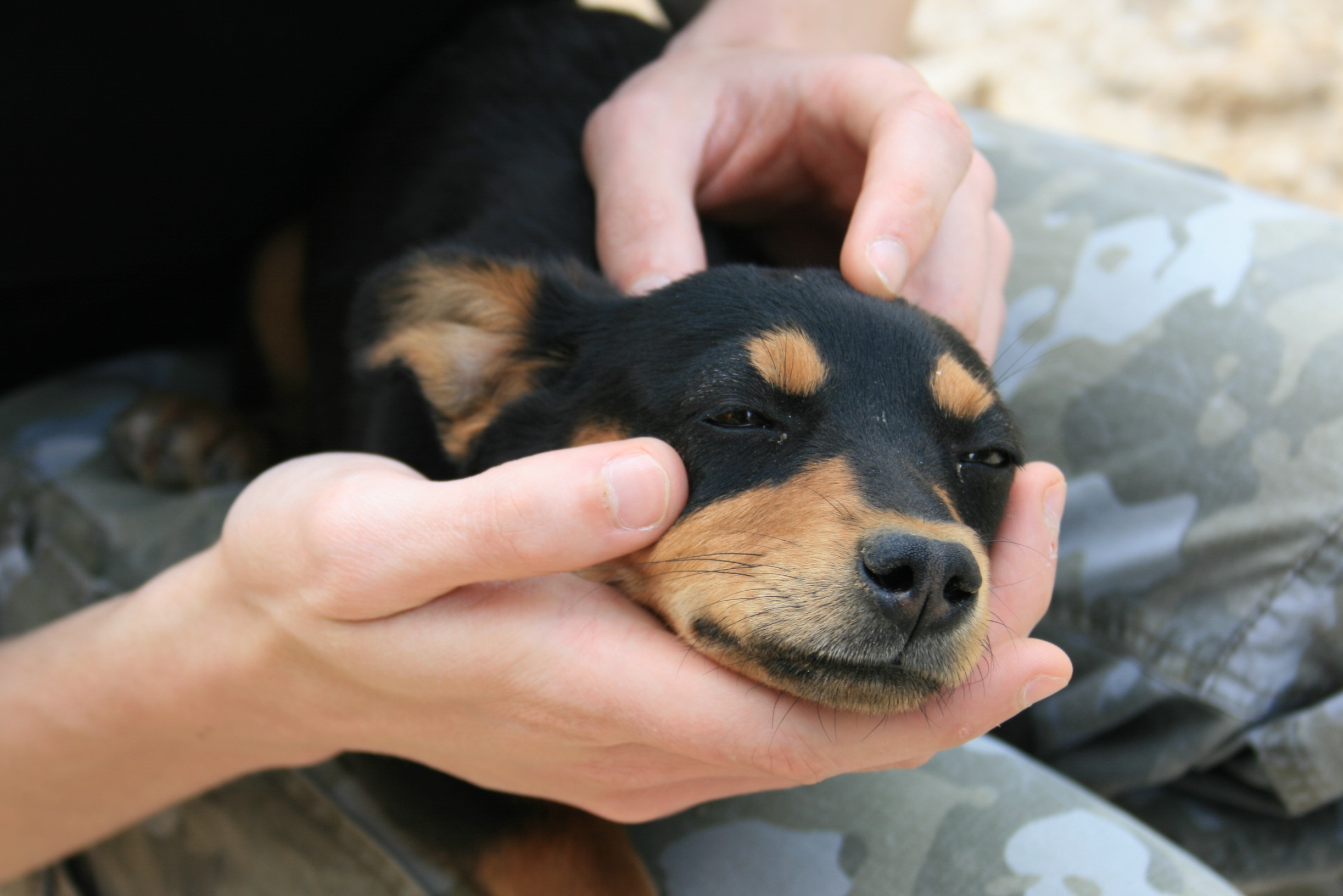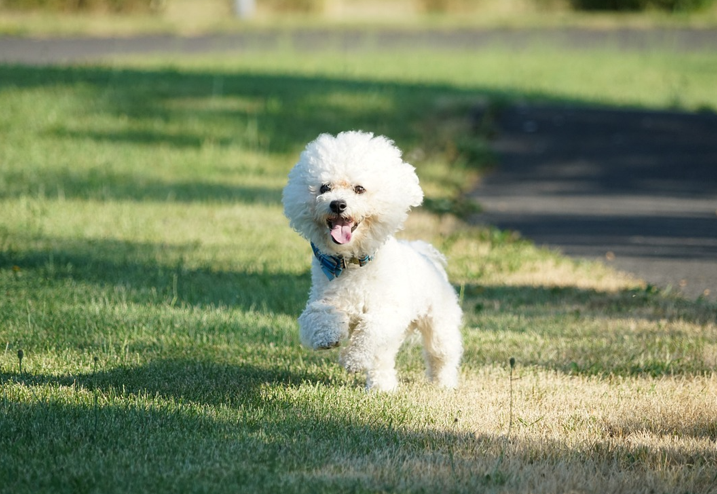
Gentle and affectionate temperament in a strong body-many people are looking for a dog who looks imposing and powerful but is actually a gentle soul to cuddle with on the couch.
One of the breeds that matches this description is the Great Dane. The canines of the breed are loved by many and also feared by plenty!
If you are looking for a service dog of a large breed, you may be interested to find out if the breed’s representatives possess the characteristics that make a dog a good service animal.
History
The origin of the dog breed can be tracked down to the medieval period in Germany, to dogs used to hunt deer and wild boar. The breed’s ancestors were also very popular among the German aristocracy, as they served as guard dogs.
It is thought that the Great Dane originates from crossbreeds between two large breeds: the Irish Wolfhound and the English Mastiff.
The name of the breed has evolved by being changed from “Englische Dogge”- which was a type of dog used to help hunters by holding bears or boars until the hunters were able to kill them, to "Deutsche Dogge”. The change was made in 1878 in Berlin, where the modern breed started to develop.
Physical Appearance and Lifespan
What is the first thing that comes to your mind when you hear “a Great Dane”? Probably you have a picture of a very big dog in your mind regardless of the specific features. We all know how large these canines can become!
Actually, the dog, who is still bearing the title “the biggest dog in the world” was a representative of the Great Dane. His name was Zeus and his height was 44 inches / 111 cm at the shoulder. Zeus passed away in 2014.
According to the breed standard, the height of the male breed representatives should be at least 30 inches / 76 cm at the shoulders. According to the American Kennel Club (AKC) it is preferable that the males are no less than 32 inches / 81 cm in height taking of course the proportion of the body into account.
When it comes to the female dogs of the breed, their height should not be less than 28 inches / 71 cm at the shoulders. The AKC recommends that the females have a height of at least of 30 inches / 76 cm.
The weight that these canines can reach is 140-175 lbs / 64-79 kg for the male representatives and 110-140 lbs / 50-64 kg for the females.
The Great Dane is a single-coated dog breed, whose coat is thick and short. It can be seen in different color variations including:
Black, White, Silver, Black & White, Brindle, Blue, Harlequin, Fawn, Mantle, and Merle.
The markings that can appear on the coats of these dogs can be in the variations:
Black Markings, White Markings, and Black Mask.
The color variations listed above are recognized by the American Kennel Club as standard breed colors.
Unfortunately, the lifespan of these gentle giants is very short-about 8–10 years. This is an important factor to consider when looking for a loving pet companion, especially a service dog. The short lifespan does not only mean that you will have to be emotionally prepared to say goodbye to your paw friend after a relatively short time (considering the lifespan of humans) but also that you will have to consider their skills in terms of physical and emotional health when it comes to service dog work.
As a general rule, the age of 10 years is deemed a retirement age for service animals, especially if they have performed physically demanding tasks. In this case, a dog of the Great Dane will reach the maximum age for working as a service animal much sooner.

Temperament and Personality
You have probably noticed that we referred to the Great Danes as “gentle giants”. These dogs are known for their affection towards their family. They have the potential to become amazing family pets for individuals who are looking for a large dog!
You may ask if a dog of a such large breed is suitable for a household with children. You may be surprised to know that these canines are very affectionate towards children, and although it all varies from dog to dog, they are considered suitable for families with kids.
However, due to their large size, you should be extra careful to avoid any injuries that your paw friend may cause to a small child by accident. As already mentioned in all the articles where a certain dog breed is discussed, proper socialization is always recommended.
If you are raising multiple pets, then you may be glad to know that these giants are very likely to get along with the other pets in the household. Some representatives may show a tendency to be aggressive towards unknown dogs, so socialization and training from a young age is always the safest option.
Since the Great Dane was initially developed as a hunting dog breed, there is no wonder that the energy levels of its representatives are rather high. However, these canines are not hyperactive.
Talking about their trainability, they are considered “trainable”, but not as much as other dog breeds are, such as the Golden Retriever or the German Shepherd. Their trainability levels are rather moderate. This is due to their somewhat stubborn temperament.
If you want to train a dog of this breed, you should be equipped with a lot of patience and consistency. Never punish your paw friend for being stubborn, but use positive reinforcement instead, as it is known for being very beneficial for training these dogs (and dogs in general).
The breed’s representatives are considered dogs with high needs for mental stimulation. Whether you will play tug war with your paw friend, will provide them with a ball launcher, or a puzzle toy, or will go to the local park to play and exercise, you should always think of your canine’s physical and mental health.
Let’s talk now about barking and if it is something you should expect when getting a dog of this breed. The Great Danes are known as moderate barkers. They can develop barking as a behavioral issue if not addressed in a timely manner. However, they are not considered excessive barkers. Barking is not deemed a real issue to deal with, as it may be for example with the Huskies.
Social Aspects
The Great Danes are known as friendly dogs who are open to new people. However, if they sense that their beloved human might be threatened in any way, they can become very protective. Once again, properly socializing your giant paw friend while they are still a pup, will be very helpful.
Having said that, the Great Danes are known for having excellent skills as watchdogs, so if you are looking for a loyal guardian at home, you may have found the right one!
The canines of the breed are also playful and very adaptive. This is probably wonderful news for those of you who are fond of large dog breeds but are unable to provide them with a spacious living environment.
The Great Dane as a Service Animal
Due to its large size, the breed may be among the preferred dog breeds by people with mobility and balance issues.
Mobility and Balance Tasks
The large size and affectionate nature of these dogs make them a good fit for individuals with impaired mobility. An important factor to consider is the age at that these canines reach physical maturity, which is typically between 1,5- 2 years.
It is highly recommended that you wait for your dog to fully develop and reach physical maturity before you expect them to perform physically demanding tasks such as pulling a wheelchair or assisting an individual with balance issues. Before that time the bone structure is still developing and the dog may get hurt if trained in difficult tasks.
Environmental Tasks
These tasks are also related to mobility issues and require the dog to have a certain type of physique to perform them. However, they do not require the same amount of strength as pulling a wheelchair and being a balance aid.
Environmental tasks that the dogs of the Great Dane can be opening/closing doors, or cabinets, turning the lights off/on, and pulling the curtain up/down.
Retrieve Tasks
Picking up items and bringing them to you may be a very helpful task for individuals whose mobility is impaired, or who may feel dizzy due to the side effects of medication they take. Your gentle large paw friend can be trained to bring you medication or other items you may need.
Picking up items off the floor and bringing them to another spot is also a task that some individuals are interested in.
Psychiatric Service Dog Tasks
Although the Great Dane is not exactly the type of dog most people think of when it comes to psychiatric service dog assistance, these canines can become wonderful Psychiatric Service Dogs!
The gentle nature of these dogs helps them easily get attuned to their owners, which is an essential part of PSD training.
Another thing you may want to know is that these large canines love to cuddle! Cuddling with them and petting them can have a very calming effect on people with mental illnesses.
Of course, proper training will need to be conducted so these large and affectionate dogs become good Psychiatric Service Dogs. Laying in your lap may not be a very suitable task to train your dog, but putting their chin on your lap is a task that your Great Dane can perform as a form of Deep Pressure Therapy.
Alerting Tasks
Since the breed’s representatives are moderate barkers, they can also be trained to alert their owners to specific factors in the environment.












